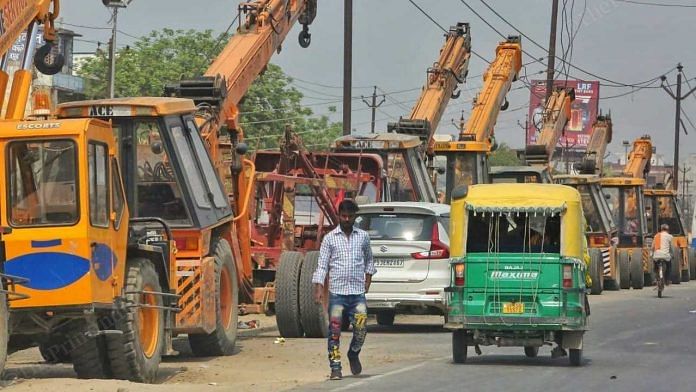Gorakhpur: The dead body floated up in Gorakhpur’s Ramgarh Tal Lake at dawn. A garbage collector spotted it, and soon, it became the talk of the town. The police quickly fortified the lake. It was a murder. Local news headlines screamed: “A corpse in Ramgarh Tal Lake again.”
But that was two years ago, in a different Gorakhpur, the constituency of Uttar Pradesh Chief Minister Yogi Adityanath. Back then, the Ramgarh Tal was the ‘khooni nalla (bloody drain)’, a notorious crime hotspot where criminals flung murdered bodies. Today, the lake is a dating spot. Couples stroll hand in hand, share ice cream, take selfies, and shoot Reels. The lake is now enveloped with 50 CCTV cameras and is a safe zone.
Gorakhpur MP Ravi Kishan even shared a breezy, happy post rowing a boat with UP minister Jitin Prasada recently. The lake’s turnaround is a resounding metaphor for the ambitious changes underway in the mutt-dominated Gorakhpur – a Metro, mall, water complex, luxury cruise, floating restaurant, new wide roads, an expressway, AIIMS, and a future OTT Capital of India. The list is endless.
If Saifai’s growth was the brainchild of Mulayam Singh Yadav and Greater Noida is credited to Mayawati, then Gorakhpur is Adityanath’s karmabhoomi, which is rapidly turning into Uttar Pradesh’s showcase city. The before and after couldn’t be starker. What used to be a chaotic city of small lanes and smaller imagination earlier is Adityanath’s ‘I HAVE A DREAM’ city today. Gorakhpur attracted Rs 1.71 lakh crore investment, beating Varanasi, Kanpur, Ghaziabad, and Moradabad at the Uttar Pradesh Global Investors Summit 2023 in Lucknow.
Preeti Tripathi, an RJ at Radio City, had never visited the lake. Ramgarh Tal Lake was the bogeyman of her childhood. “We would hear about stories of rape. It would send shivers down our spine,” she said.
But her first visit was a revelation. Instead of muddy paths and unlit roads, she found a promenade. Now, she confidently rides her scooter home even late at night near the lake, relishing in her newfound freedom.
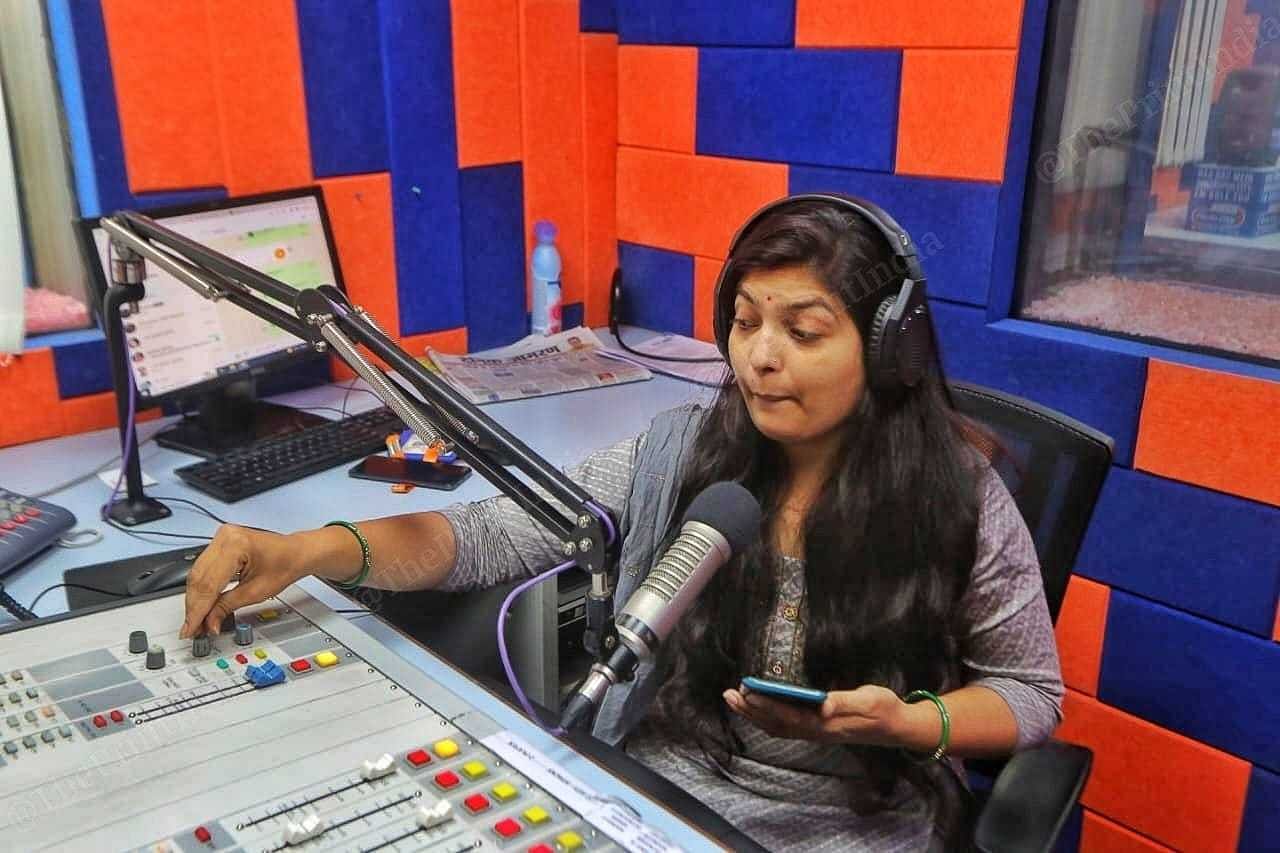
Also read: ‘Har Ghar Camera’— In Gorakhpur village, 103 CCTVs crack down on crime & romance
Taj Vivanta to Gorakhpur Expressway
When IAS officer Mahendra Singh Tanwar was appointed vice-chairman of the Gorakhpur Development Authority (GDA) last year, he knew that the city, with a population of 9-10 lakh, needed a complete overhaul. CM Adityanath had an ambitious vision, and a superficial facelift would not be enough.
Located in the heart of eastern Uttar Pradesh, Gorakhpur was the turf of petty thieves, gangsters, and crime lords. Coupled with its low development index, the city remained overlooked despite its proximity to Ghaziabad and Noida.
Tanwar learned about the CM’s plans to transform the city and decided to start with Ramgarh Tal. His blueprint was Mumbai’s Marine Drive. Today, the area boasts a promenade for pedestrians, a four-lane road for motorists, benches for senior citizens, fountains, trees, and white tent-like canopies that are immensely popular with the panoply of social media seeking the perfect sunset against Gorakhpur’s growing skyline. Furthermore, heavyweights in the hospitality sector are taking note. Indian Hotels Company Limited (IHCL)’s Taj Vivanta, Ramada, Holiday Inn, and Marriott are preparing to establish their presence around the lake, with construction work already underway. Tanwar proudly showcases blueprints and maps, highlighting the proposed locations of these hotels.
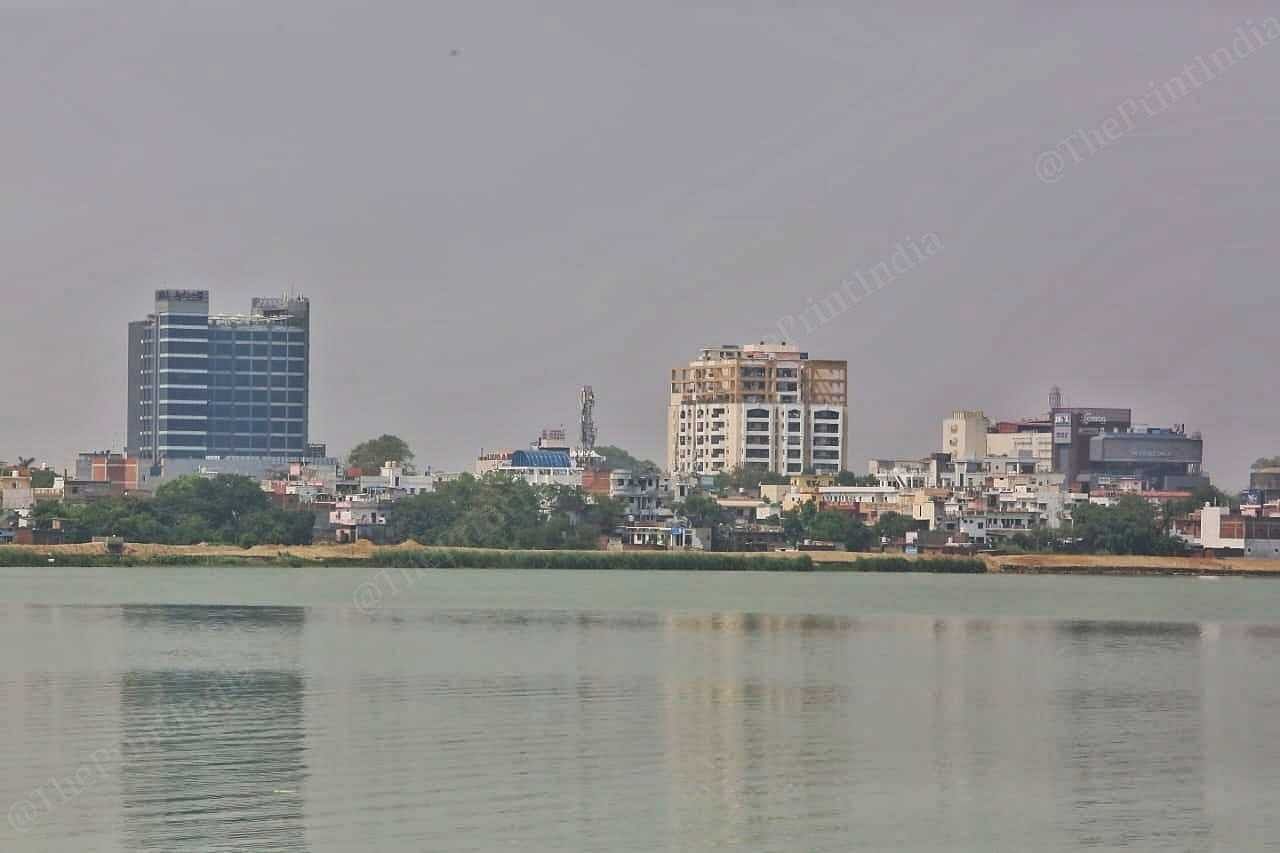
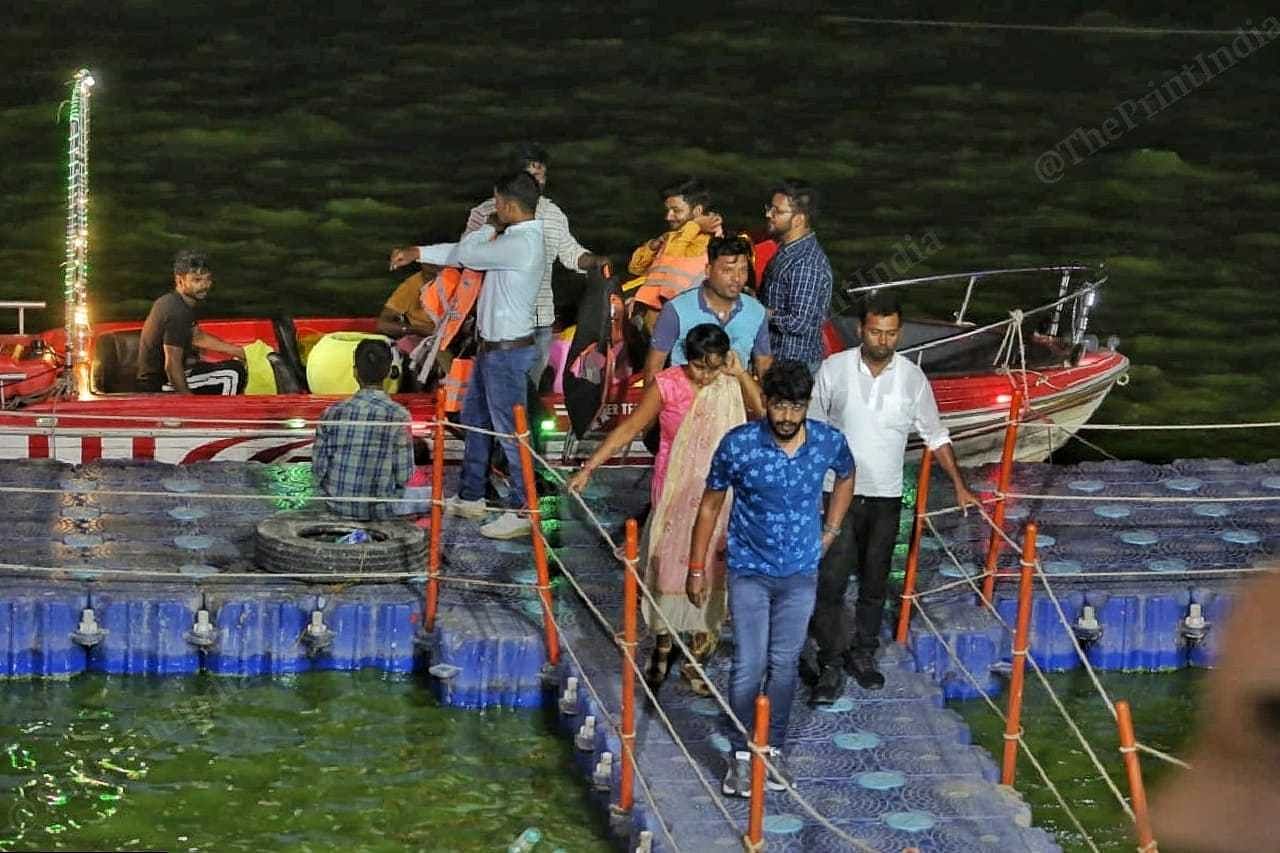
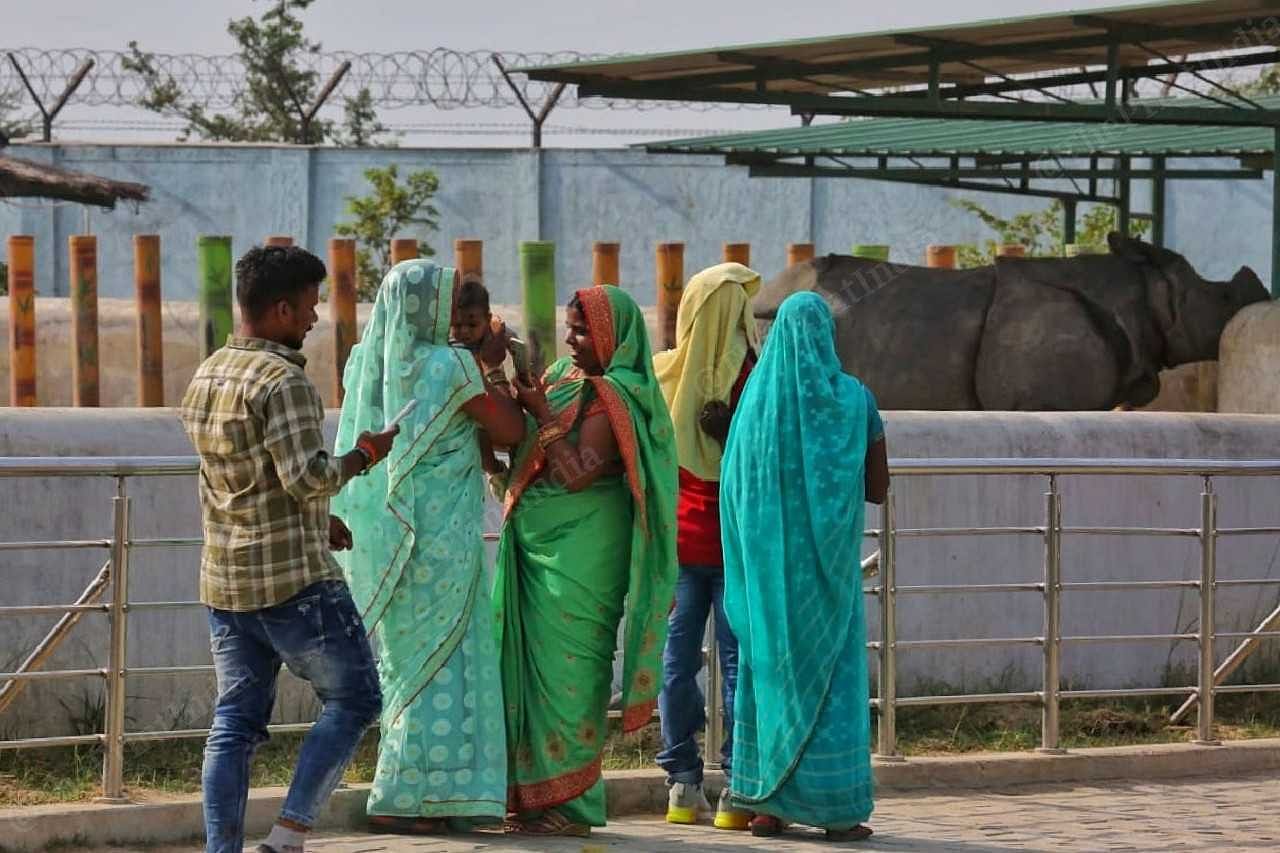
Previously, people would only visit the mutts, but now they are extending their stay in Gorakhpur due to the lake and the sprawling 21-acre zoo that opened in 2021. CM Adityanath was even seen feeding milk to a leopard cub during his visit to the zoo last year.
Tanwar credits Adityanath for Gorakhpur’s transformation. “The chief minister knows Gorakhpur like the back of his hand. He is familiar with every nook and corner and is always open to new ideas. It makes our job easier,” he said. According to officials, Adityanath visits Gorakhpur thrice a month and meets with authorities for updates on ongoing work.
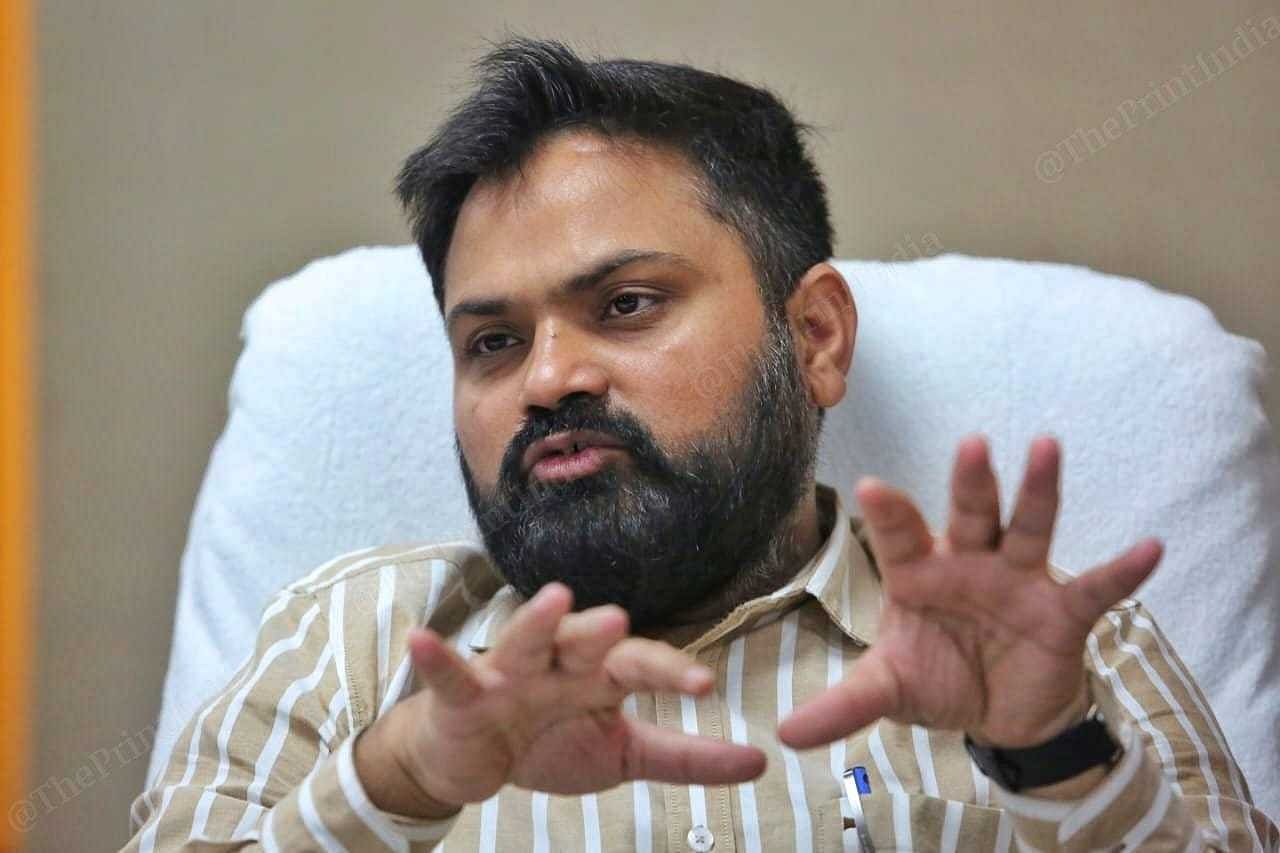
The Gorakhpur administration is just getting started, and the inspiration this time is not Mumbai, but London—specifically the UK’s giant ferris wheel, the London Eye. The keyword here is ‘mammoth’. The Gorakhpur Eye will be a grand amusement ride on the banks of Ramgarh Tal Lake, Tanwar said.
Real estate hoardings promoting spacious houses and farmhouses at discounted rates have emerged, while another banner showcases global brands. A signage at the centre of the promenade at Ramgarh Tal reads “I Love Gorakhpur”.
While the lake area serves as a symbol of ‘beauty’, Gorakhpur will also be defined by a slew of projects, including a satellite town and one thing that all Indian cities aspire for these days—a gleaming new metro that promises to change the way people commute. Though still a proposal, it is an ambitious dream for a city that is neither a state capital nor a large city. Gorakhpur will become the 16th city in India to have a metro, joining the ranks of Ahmedabad, Bengaluru, Chennai, Delhi, Gurugram, Hyderabad, Jaipur, Kanpur, Kochi, Kolkata, Lucknow, Mumbai, Nagpur, Noida, and Pune.
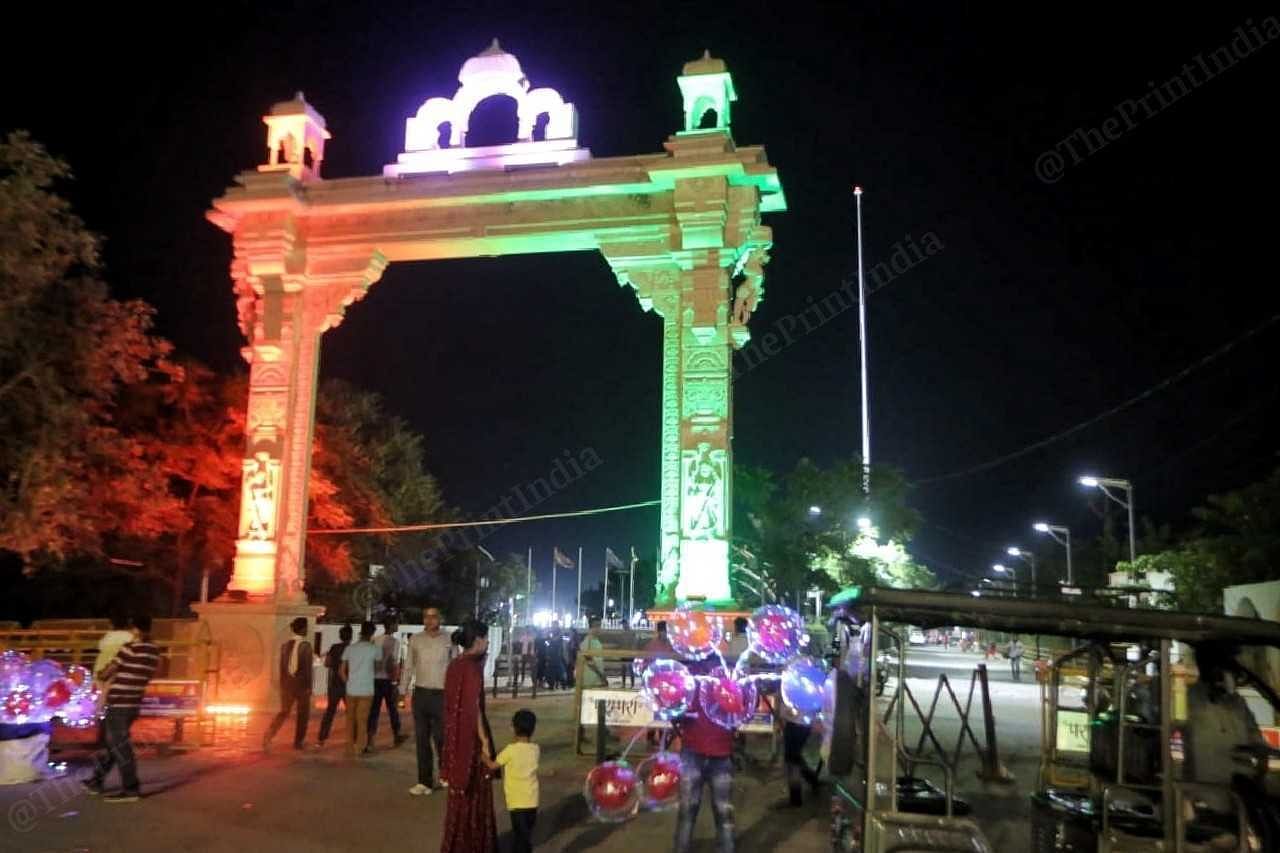
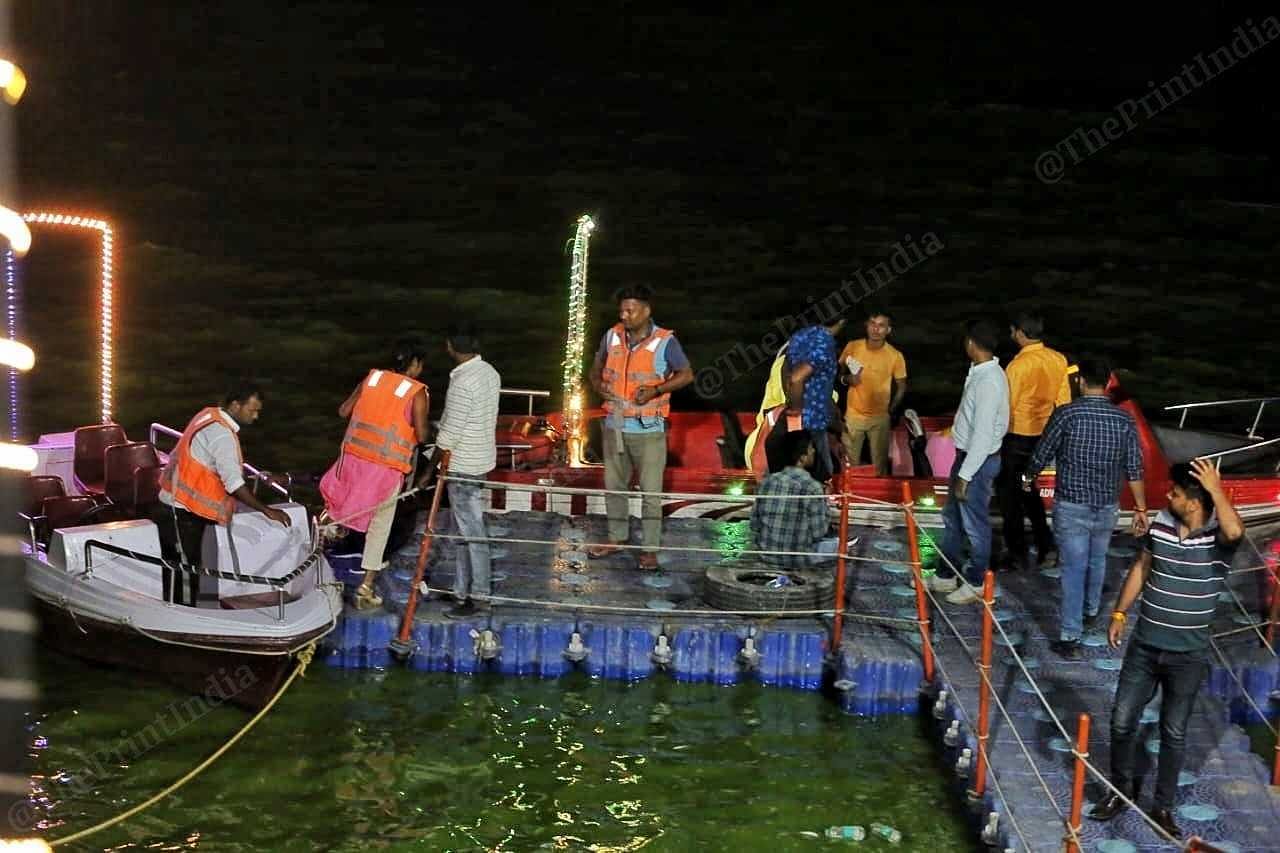
“These developments will shape the city’s expanding urban landscape, offering a modern and dynamic edge to its metropolitan identity,” said Tanwar, facing a Gorakhpur metro map that hangs on the wall in front of him. The detailed project report has been sent to the central government for clearance.
The Gorakhpur Development Authority (GDA) has proposed two lines for the intra-city service, blue and red. These lines will bring outlying areas closer to the city, while within the city, the metro will connect key installations such as BRD Medical College, Gorakhnath Math, Gorakhpur University, and AIIMS.
Currently, most people rely on private transport or the 60-odd electric buses, autos, and e-rickshaws. “Forty percent of [road] traffic will shift to the metro once it’s operational,” said Tanwar.
Local newspapers call it ‘Yogi’s smart city project’, real estate agents are revisiting property prices, and citizens eagerly await their very own metro. “Yogi is beautifying and strengthening the city with top-class development. Soon, we will be rising like other metropolitan cities,” said Ravi Kumar, a postgraduate student.
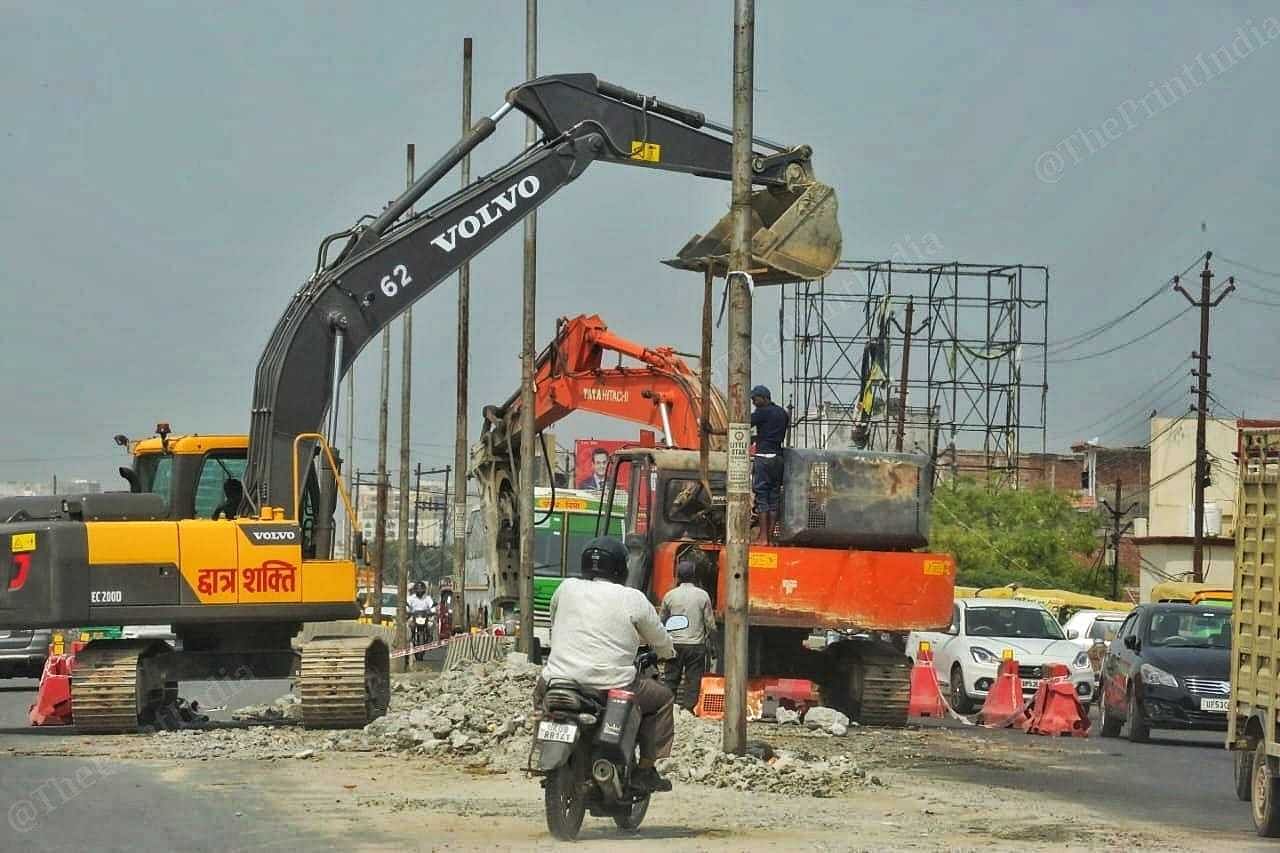
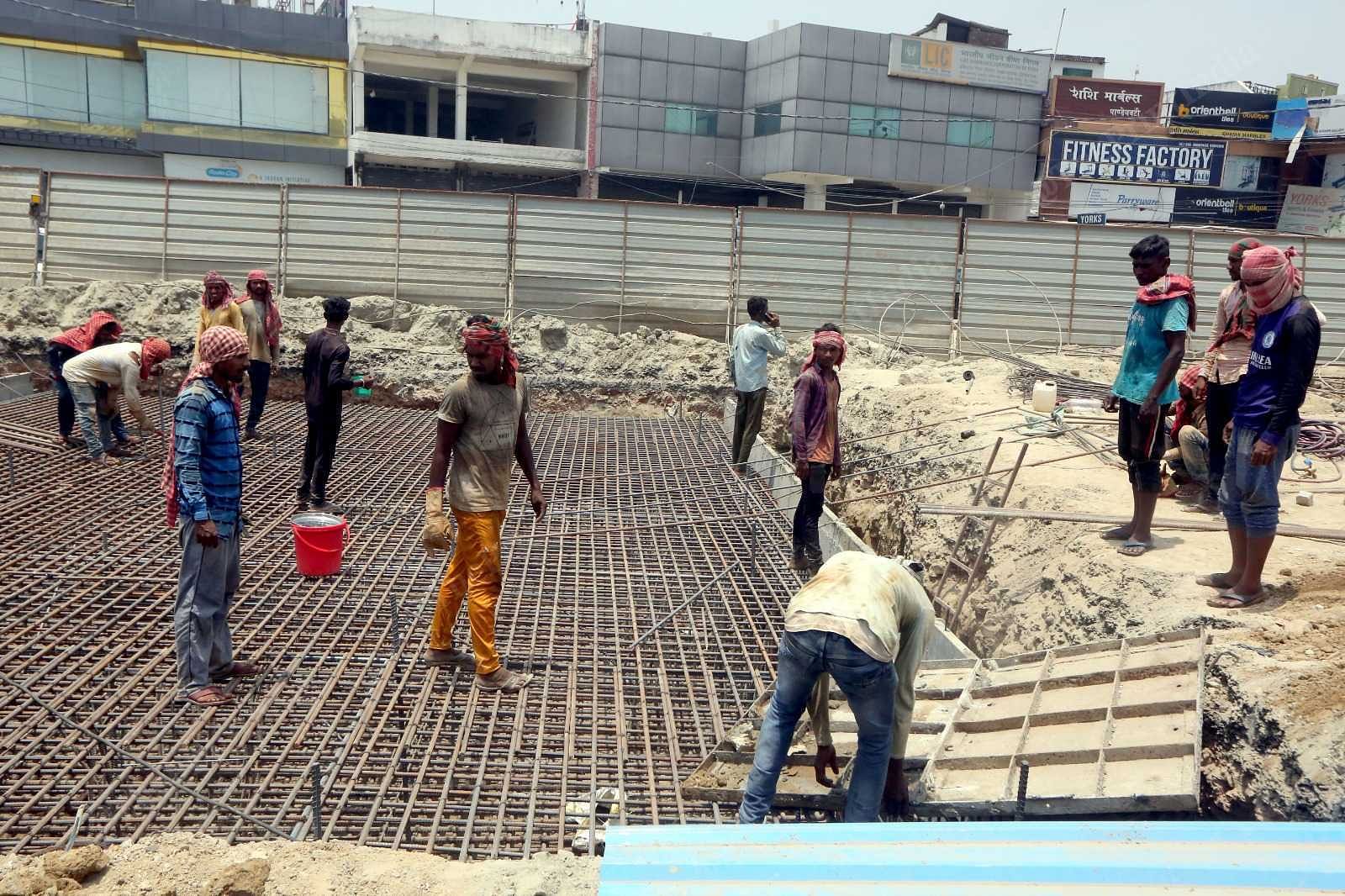
It’s all part of Adityanath’s plan to put Gorakhpur on the investor map, from OTT (Over-the-Top) to energy. One of the MoUs signed at the global investor summit was with Avada Ventures, committing Rs 22,500 crore to set up a green ammonia plant in Gorakhpur. Other investors include RG Strategy Group for a Rs 2,935 crore paper mill project, Indian Oil Corporation for an LPG pipeline, Cayan Distilleries, and a subsidiary of PepsiCo.
It all began with providing the Gorakhpur Industrial Development Authority (GIDA) its own building, lending credence to the authority’s commitment to facilitating ease of business, attracting investors, and acquiring land for new projects.
Also read: Yogi Maharaj’s Gorakhpur darbar is a one-stop solution for everything — grooms and goons
Investors’ new home
Not too long ago, in the 1980s-90s, Gorakhpur was the domain of gangsters like Prakash Shukla, Hari Shanker Tiwari, and his rival Virendra Pratap Shahi, who had support from the Rajput community. The battle for control of the city frequently spilled onto the streets, often divided along Rajput vs Brahmin lines. Shukla briefly emerged as the victor after allegedly shooting down Shahi in 1997, but he was killed in a police encounter the following year. The bloodshed and gang wars provided fodder for Bollywood films, but for the business community, it was a time of fear, with the constant threat of extortion calls.
But Hari Shankar Tiwari’s death last month was barely a footnote, his funeral muted, reflecting Adityanath’s commitment to cracking down on mafias. “Gorakhpur was once infamous for mosquitoes and mafia but is now known for development,” the CM had said in August last year during a foundation laying ceremony of various projects in the city.
At GIDA, a framed portrait of Adityanath dominates the hall. He presence is felt everywhere, including the office of GIDA CEO Pavan Agrawal, where a similar photo of the CM hangs on the wall. GIDA itself was established in 1989 but operated out of a rented space until 2017. By 2018, it had its own multi-storeyed office near the industrial area in Sector 7, making it easier to facilitate business. Agrawal proudly refers to the office as GIDA’s own.
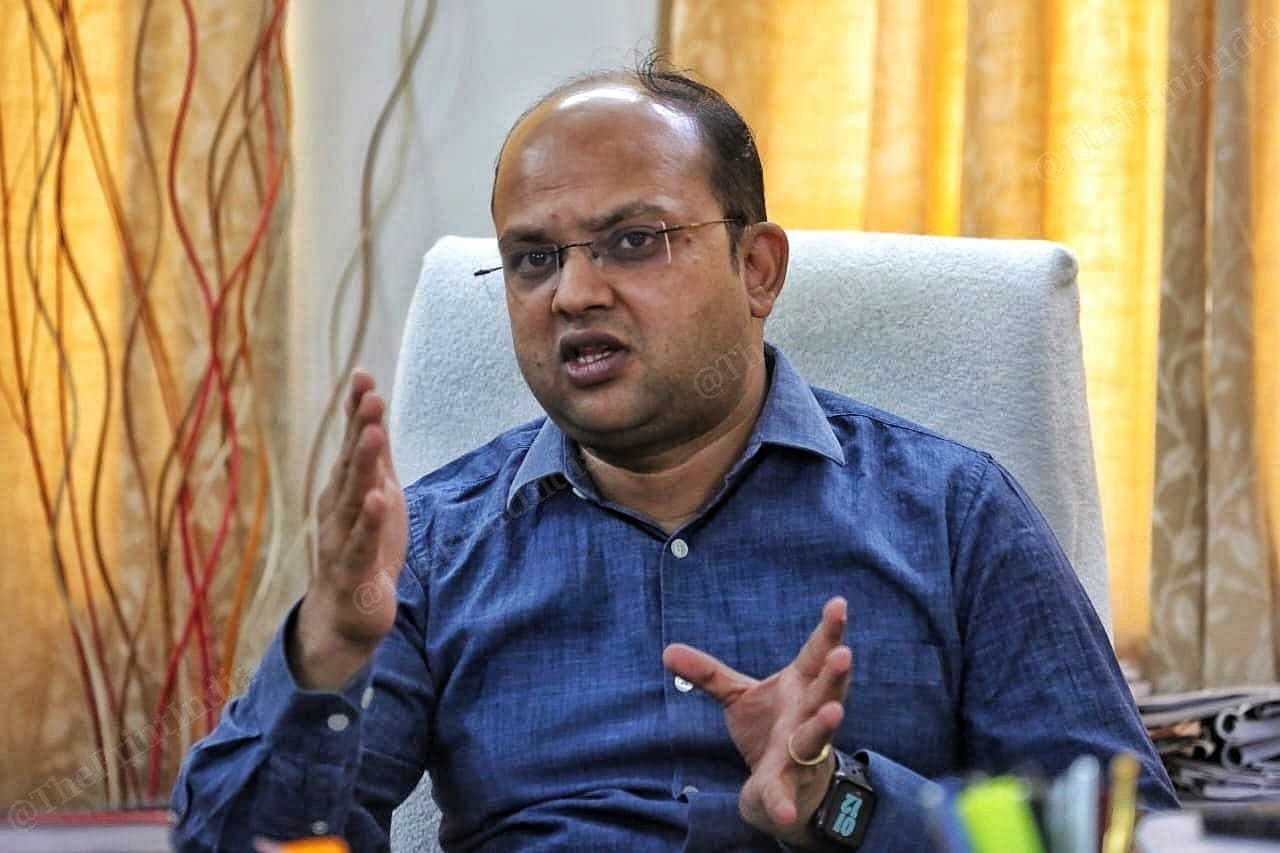
“In the past, investors wouldn’t take us seriously because they would see the CEO of GIDA working out of a rented office. It gave a bad impression to investors,” he laughs.
To attract new investors, the BJP government first had to fix the broken industry. It chose the Gorakhpur fertiliser plant, a Congress-era relic commissioned by then-Prime Minister Indira Gandhi in 1968. Operations at the plant had been halted since 1990 after an ammonia gas leak killed an engineer. Restoring the public sector unit (PSU) became Adityanath’s mission.
With a cost of Rs 8,603 crore, the plant became a symbol that would propel growth in eastern UP.
“Five governments came and went in UP in the last 30 years. Only the BJP government had the courage to start this fertiliser factory in Gorakhpur,” said the CM during its inauguration.
Prime Minister Narendra Modi himself inaugurated its reopening in December 2021, along with AIIMS-Gorakhpur and the IMCR Regional Medical Research Centre. The success of the plant was hailed as a victory for the BJP.
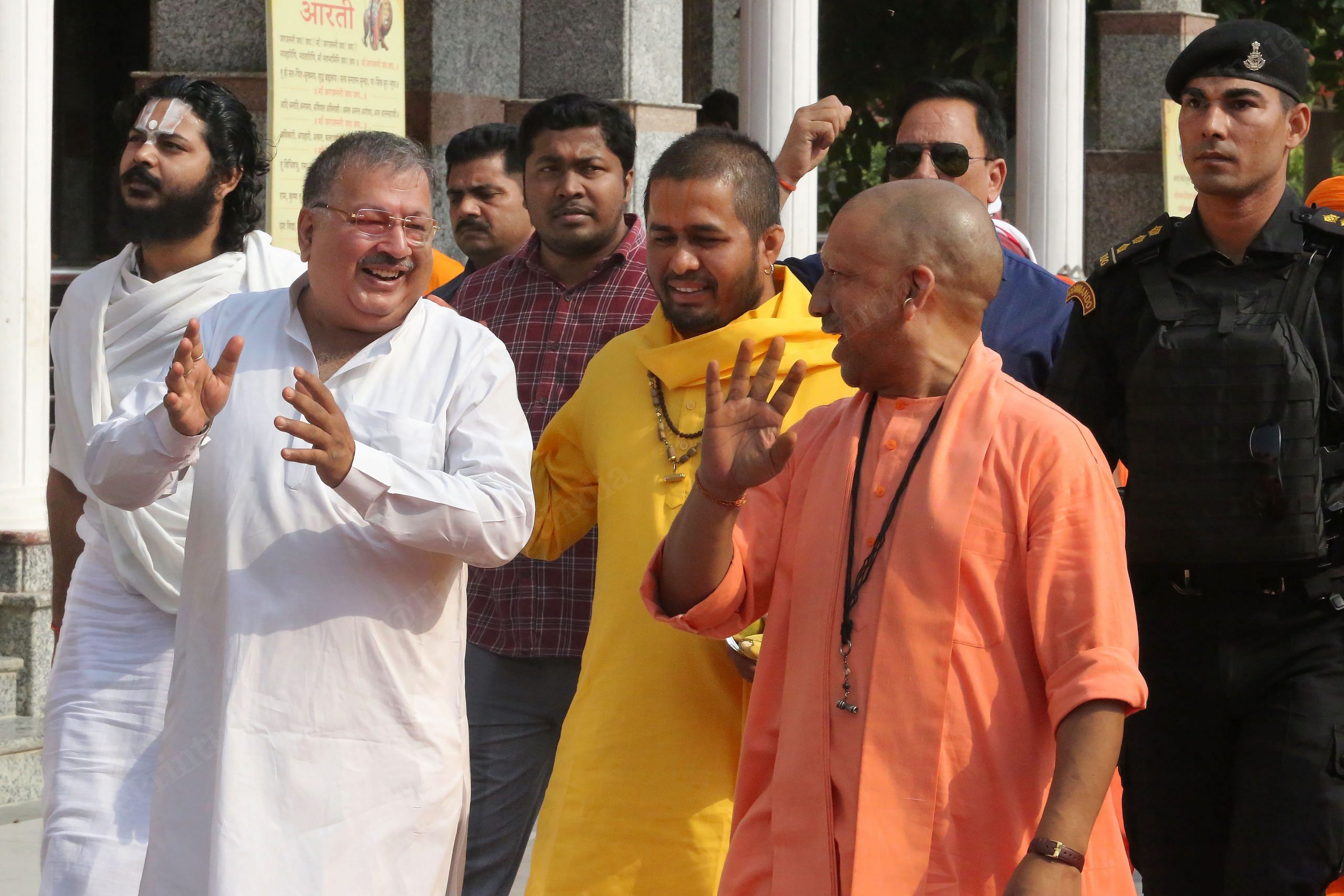
“The factory’s supply of urea has given it a niche in the domestic market and has directly employed around 20,000 people and indirectly employed 1.5 lakh,” said Arvind Pandey, an HR representative at the factory.
In the first year of his second term, the Adityanath government invested over Rs 12,000 crore, a bulk of which went towards improving drainage and roads, according to a government source.
Like the classic, ‘if you build it, they will come,’ it was the roads that impressed Kamlesh Kumar Jain, the Chief Operating Officer (COO) of Varun Beverages, an all-India franchise of PepsiCo. The company will be setting up the first plant in the industrial corridor alongside the Purvanchal Expressway.
“Have you seen the roads in Gorakhpur?” he asked “They weren’t like this before. A two-kilometre journey would take an hour.”
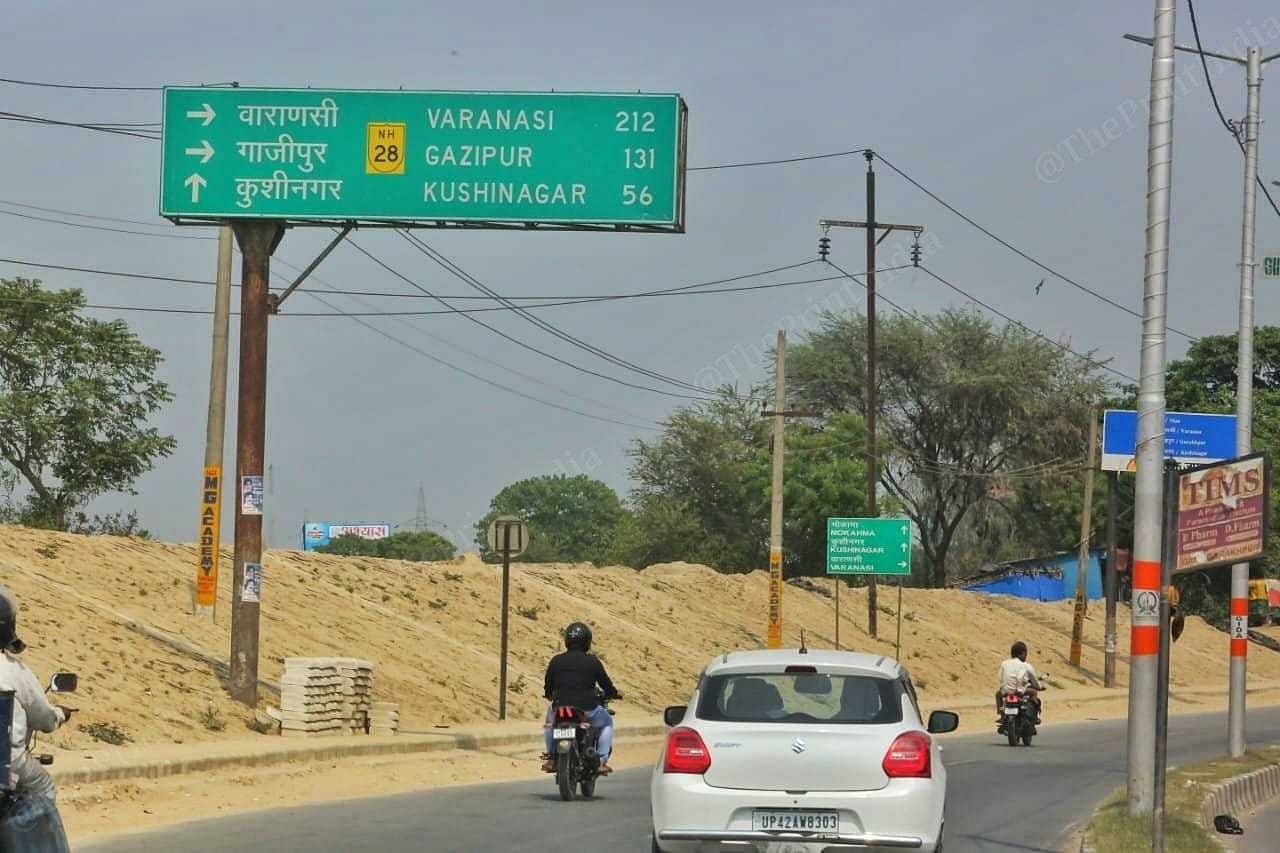
Investing in Gorakhpur hadn’t even crossed Jain’s mind five years ago. His previous visits to the city were marred by frustrating traffic jams, disorganised vehicle movement, and a sense of isolation from surrounding areas.
With more four- and six-lane thoroughfares, and the soon-to-be completed Gorakhpur Link Expressway, travel to neighbouring districts is expected to be expedited. Jain confidently refers to Gorakhpur as the “prime choice” for investors.
“Our team’s analysis has shown a demand in the market, and the government is motivating investors and industries,” he said.
Jain was pleasantly surprised by the ease of doing business. After signing the MoU last July, he braced himself for a long wait for approvals. However, the approvals came through within two months. By September 2022, he had been allotted 50 acres of land in Sector 27, which is situated near Gorakhpur Link Expressway to develop two factories—a cold drink facility and a dairy plant.
“I never expected this level of promptness. In September last year, we were allotted the land, and in October, the land was registered. The factory will be operational by the next financial year,” said Jain.
Varun Beverages will be the first to establish manufacturing units at the industrial corridor. GIDA is also developing a plastic park, the first in Uttar Pradesh and the seventh in India. A plastic park is an industry zone dedicated to establishing units for plastic enterprises, encompassing a range of companies involved in plastic processing, from material supply to recycling and waste management, in a single zone.
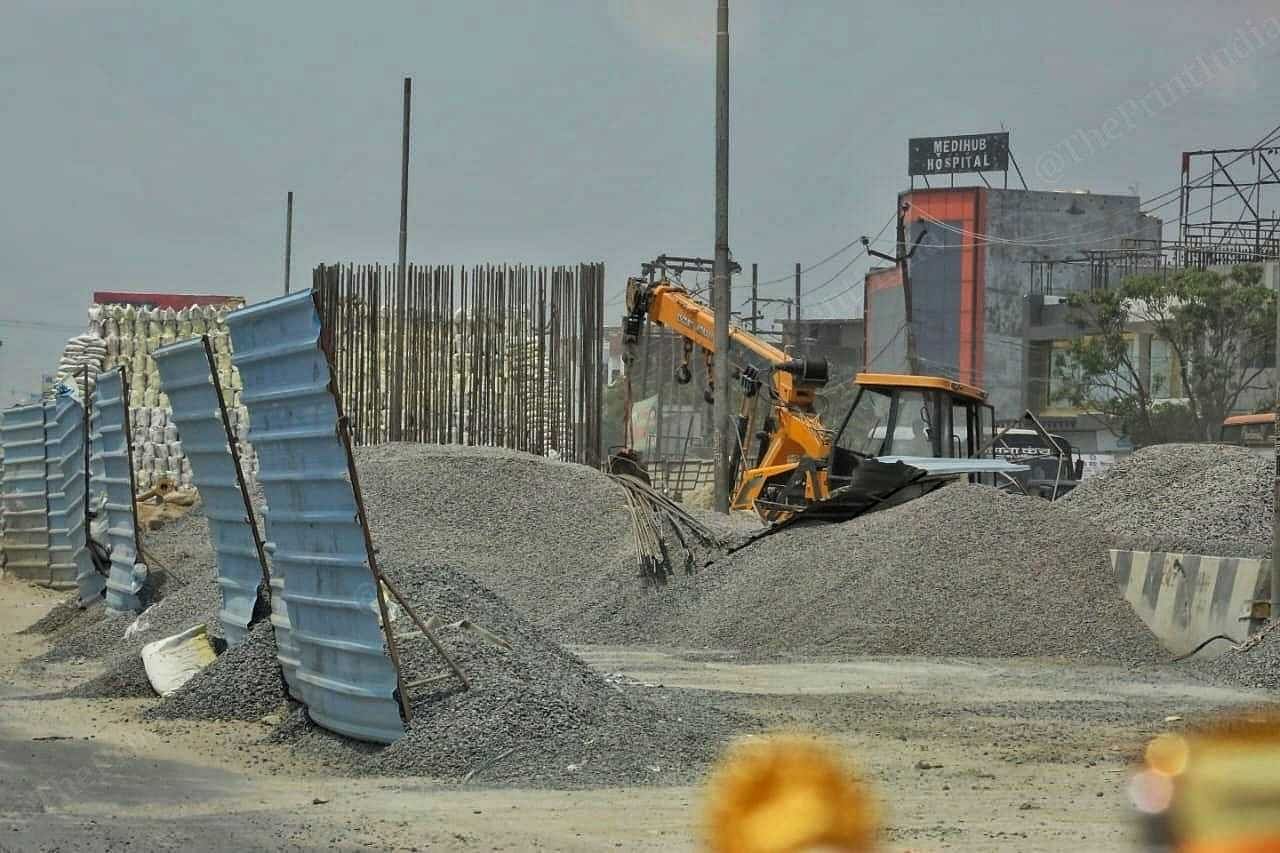
“The plastic park will provide employment to 5,000 people, with 10-15 percent of the park dedicated to recycling work. Before 2017, there were only two industrial sectors, but now there are five, and we are planning to add three more,” said GIDA CEO Agrawal.
Historian PK Lahiri is impressed by the government’s 360-degree approach to the city’s development. According to him, a city’s development is determined by two factors: beautification and economy.
“There is visible beautification, and with development, the economy has also improved. It has also opened gates for education and employment. The day is not far when the IT industry will also come to Gorakhpur, and no young men and women will have to migrate to other cities for employment.”
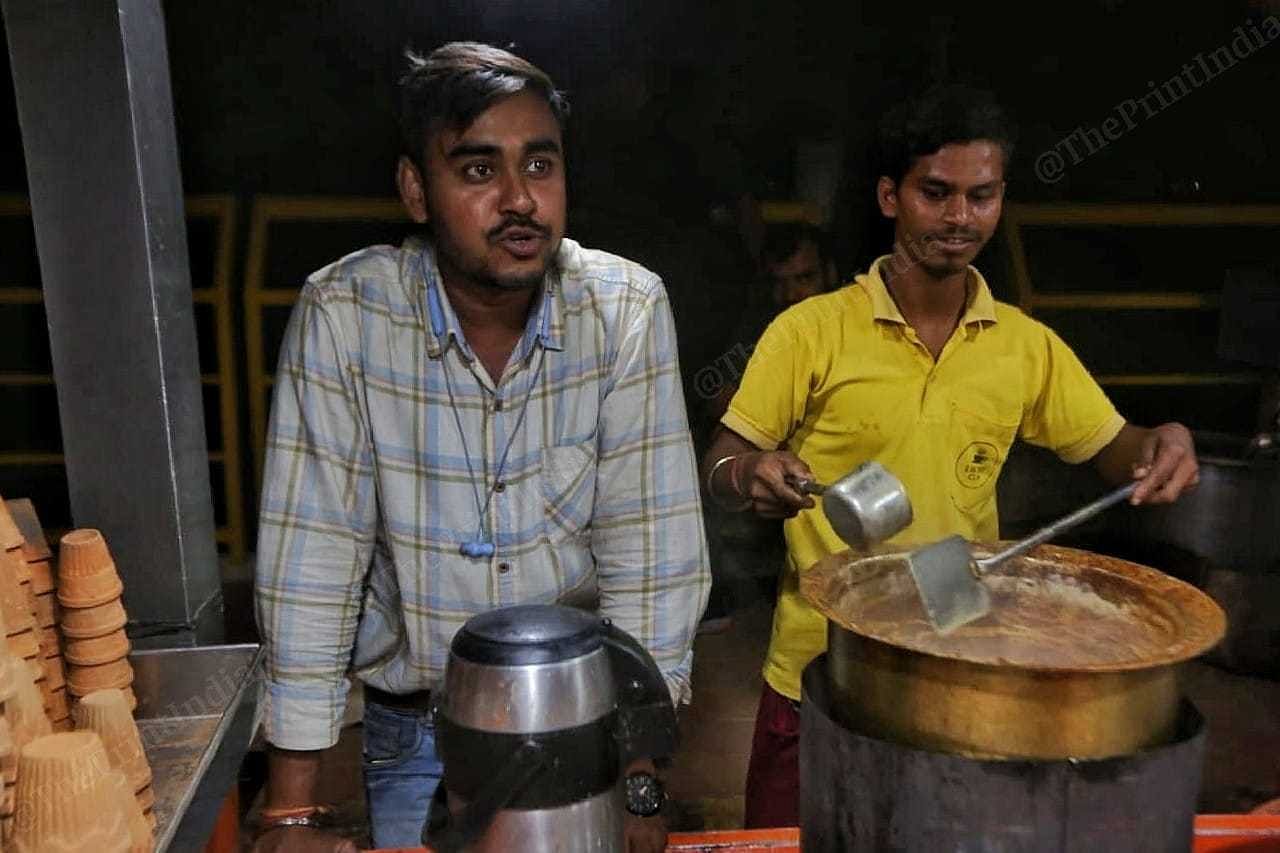
Also read: Gita Press at 100—the cultural powerhouse made Hinduism relatable, affordable, portable
‘Delhi has come’
The idea of a satellite town started taking shape during the pandemic years when people began returning home from cities like Delhi and Gurugram. The flood of reverse migration made the authorities realise the need for a modern, well-planned urban centre that could nurture the aspirations of Gorakhpur’s own.
The state government has allocated 600 acres of land to New Gorakhpur. With a staggering budget of Rs. 17,000 crores, this model satellite city project is backed by a substantial investment of Rs 3,000 crores from the Uttar Pradesh government. The rest is by private investors.
Chandan Narayan, a real estate contractor, is betting on his city. He left home in 2010 to invest in the textile industry in Gujarat but returned in 2017 when his father fell ill. At the time, he thought it would be a temporary relocation. But in just a few months, he realised that the government was serious about its plans for Gorakhpur and decided to stay back despite the extortion culture that businessmen feared.
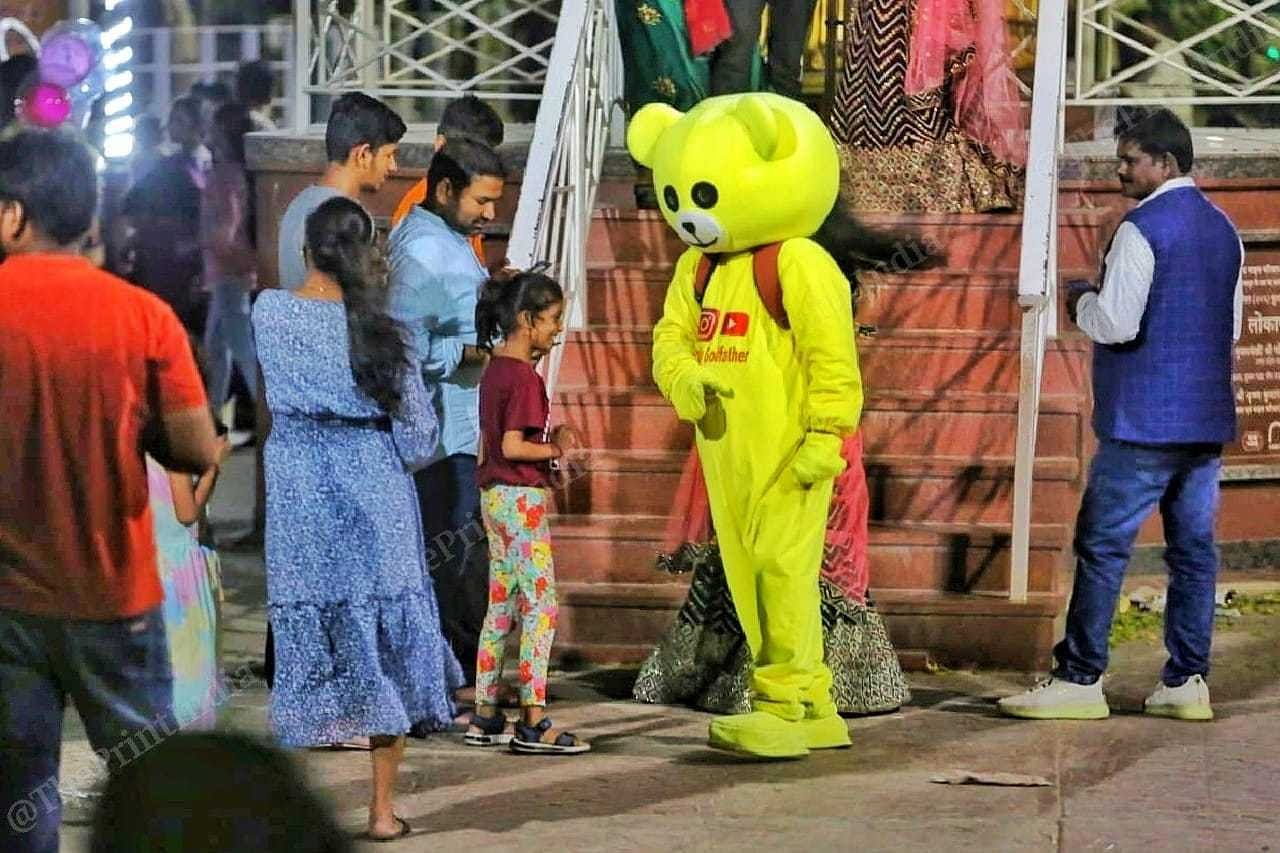
“Earlier, everyone was scared to invest in Gorakhpur because of the mafia. They would ask for 20 percent of the investment,” Narayan recalled while sipping on a cappuccino at the rooftop restaurant, Sarovar Portico.
When Narayan’s father was battling cancer in 2012, the only BRD hospital at the time had limited facilities for cancer patients and could not accommodate him. Doctors told him to take his father to Mumbai.
“We first had to go to Lucknow, and from there we took a flight to Mumbai to see a doctor at Tata Memorial Hospital,” said Narayan. Ten years later, Gorakhpur has its very own All India Institute of Medical Sciences (AIIMS), and flights connecting to major cities across India.
Spread across 100 acres with 86 permanent faculty members and 23 departments, AIIMS has made Gorakhpur the health capital of eastern UP. People from Maharajganj, Deoria, Kushinagar, and Azamgarh are increasingly turning to the doctors here. In 2020, Dr Surekha Kishore became AIIMS-Gorakhpur’s first woman executive director.
“When I learnt that I am being appointed as director at AIIMS-Gorakhpur, I was elated,” said Kishore, who was previously the dean of academics at AIIMS-Rishikesh. “The task was challenging. But in a city that is transforming in perception, I feel that my contribution is very important.”
And her work is far from over. AIIMS-Gorakhpur still doesn’t have a super speciality wing; the delay has been attributed to the shortage of doctors.
“There are doctors, but they are not convinced to join in Gorakhpur. They have not come out of the old Gorakhpur,” Kishore said, alluding to the fear associated with the old image of Gorakhpur. “That is the challenge we are facing right now.”
Convincing top doctors to come to smaller cities is a hurdle that small-town AIIMs across India are facing.
But connectivity is improving in Gorakhpur. Although the airport lacks a sprawling terminus and only has one runway at the moment, ten flights connect it to Delhi, Mumbai, Kolkata, Lucknow, Hyderabad, and Bengaluru every day. But expansion is underway. Once completed, the extended terminal will cover 3,440 sq m with ten check-in-counters and a capacity for 200 passengers.
But what’s creating a buzz is the arrival of content creator and distributor Shemaroo Entertainment, which is currently shooting its new web series in the city. It’s in keeping with Adityanath’s past announcements on making Gorakhpur a hub.
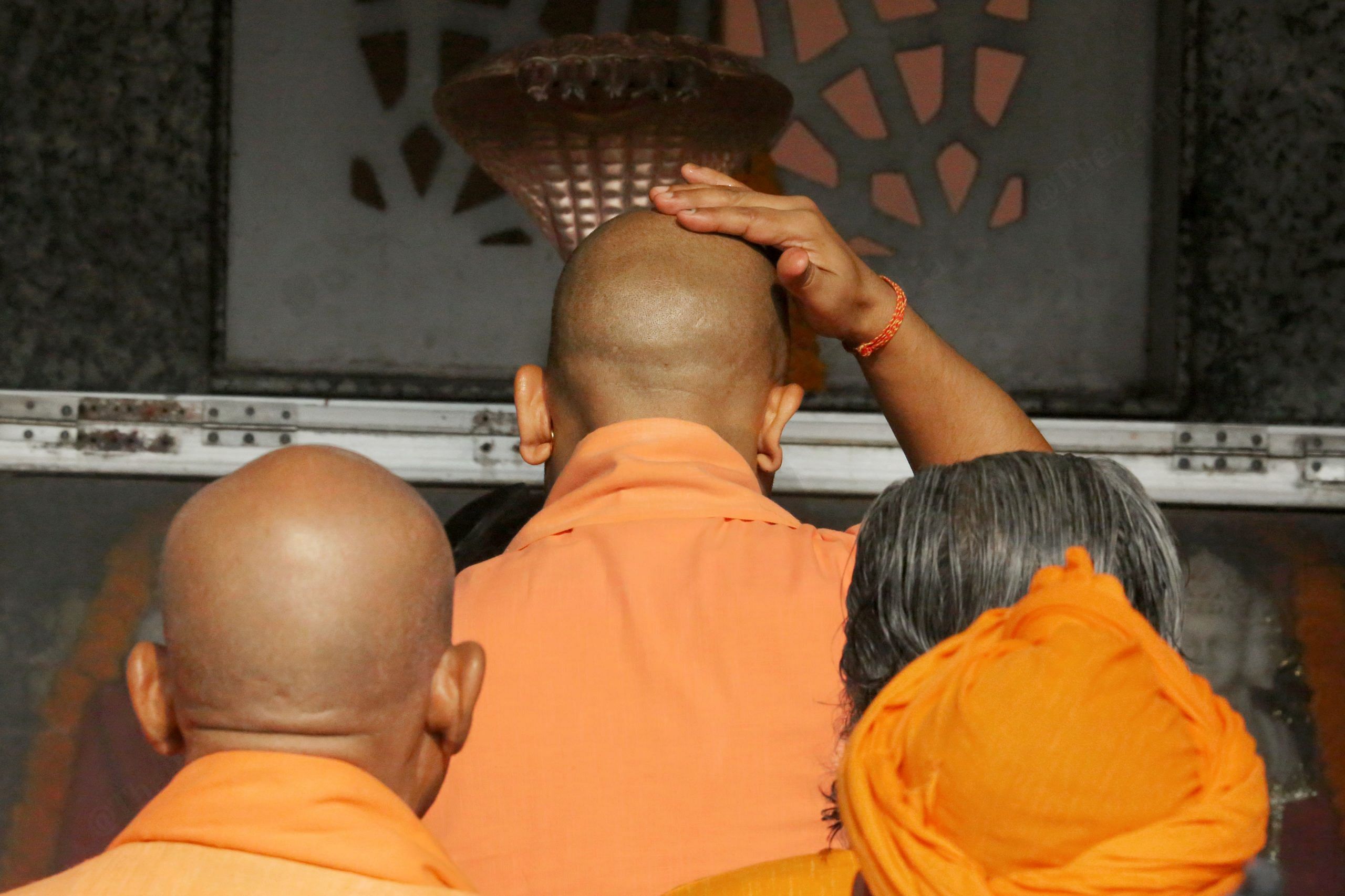
One of the actors, Gajendra Brijraj, who is from Gorakhpur, said that more such production houses will be coming in the future. The OTT industry is also providing direct and indirect employment to the people.
“The shooting is taking place around the lake and ghats. The actors and directors are excited. They said the old preconceived image of Gorakhpur has shattered in their minds,” said Gajendra, confident that it will pave the way for more shoots and employment.
As businessman Narayan steps out of the restaurant after a leisurely coffee break and walks towards his car, a disembodied female voice emanates from the traffic signal ahead.
“A black bag was recovered near Golghar by the police. Please pick up this bag from the nearby local police station for whoever it belongs to.”
Narayan points to the traffic light affixed with two cameras and a soundboard.
“This is new Gorakhpur for you. Everyone has joined the CM to make the city better.”
Historian Lahiri is overwhelmed by the changes unfolding at breakneck speed in his once sleepy town. There was a time when people would dream of going to Delhi because all the facilities were available there.
“Now, Delhi has come to Gorakhpur.”
(Edited by Prashant)
Also read: What’s inside UP Police’s intel reports on Yogi Adityanath’s Hindu Yuva Vahini


